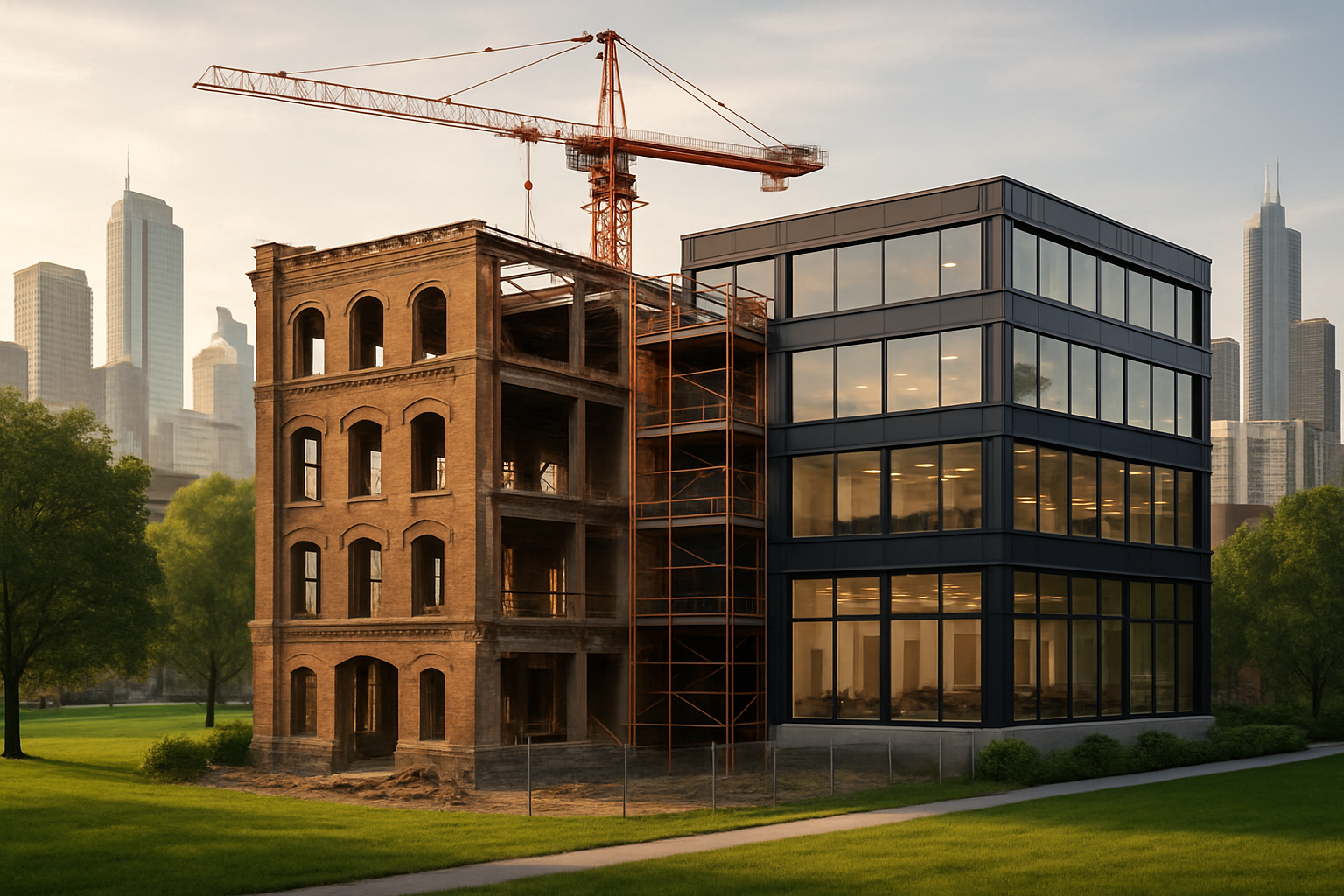Title: Adaptive Reuse: Breathing New Life into Obsolete Properties
In the ever-evolving landscape of real estate, a transformative trend is reshaping urban environments and challenging traditional notions of property development. Adaptive reuse, the process of repurposing existing buildings for new functions, is gaining momentum as a sustainable and economically viable solution to urban revitalization. This innovative approach not only preserves architectural heritage but also offers unique opportunities for investors, developers, and communities alike.

Economic Advantages of Repurposing
From a financial perspective, adaptive reuse can offer significant cost savings compared to new construction. While renovation costs can vary, developers often benefit from existing infrastructure, potentially lower material costs, and shorter project timelines. Additionally, many jurisdictions offer tax incentives or grants for the rehabilitation of historic properties, further enhancing the economic appeal of these projects.
Sustainability and Environmental Impact
The environmental benefits of adaptive reuse are substantial. By repurposing existing buildings, developers can significantly reduce the carbon footprint associated with new construction. The preservation of embodied energy—the sum of all energy required to produce a building—is a key factor. Studies have shown that the reuse of buildings can be 4-46% more efficient than new construction when comparing buildings with the same energy performance level.
Challenges in Adaptive Reuse Projects
While the benefits are compelling, adaptive reuse projects come with unique challenges. Older buildings may require extensive renovations to meet modern building codes and energy efficiency standards. Unforeseen structural issues, hazardous materials, and complex zoning regulations can also complicate the process. Developers must carefully assess these factors and work closely with architects, engineers, and local authorities to navigate potential obstacles.
Market Trends and Investment Opportunities
The adaptive reuse market is experiencing robust growth, with particular interest in converting former industrial spaces, office buildings, and retail centers into residential units or mixed-use developments. According to recent market analyses, the global adaptive reuse market is projected to grow at a CAGR of 5.8% from 2021 to 2028, reaching a value of $307.6 billion by 2028. This trend is particularly pronounced in urban areas where land is scarce and demand for housing is high.
Case Studies: Success Stories in Adaptive Reuse
Numerous success stories illustrate the potential of adaptive reuse. The High Line in New York City, a former elevated railway transformed into a public park, has spurred billions in economic development and become a model for urban revitalization worldwide. In Detroit, the historic Book Depository building, once slated for demolition, has been reimagined as a mixed-use innovation hub, breathing new life into the city’s downtown core.
Regulatory Landscape and Incentives
Governments and municipalities are increasingly recognizing the value of adaptive reuse and implementing policies to encourage these projects. Many cities have revised zoning laws to facilitate the conversion of non-residential buildings into housing or mixed-use spaces. Historic tax credits at the federal and state levels provide financial incentives for the rehabilitation of certified historic structures, making these projects more attractive to investors.
Future Outlook: Adaptive Reuse in a Post-Pandemic World
The COVID-19 pandemic has accelerated certain trends that may further boost adaptive reuse projects. With the shift to remote work, many office buildings are underutilized, presenting opportunities for conversion to residential or mixed-use spaces. Additionally, the pandemic has highlighted the need for flexible, adaptable spaces that can serve multiple functions—a concept well-suited to the adaptive reuse model.
Considerations for Investors and Developers
For those considering investing in adaptive reuse projects, thorough due diligence is crucial. Key factors to evaluate include the building’s structural integrity, potential for contamination, zoning restrictions, and historic designation status. Assembling a team with experience in adaptive reuse projects, including architects, engineers, and contractors familiar with older building systems, is essential for success.
Conclusion: A Sustainable Path Forward
Adaptive reuse represents a compelling solution to many of the challenges facing urban development today. By reimagining existing structures, developers can create unique, sustainable spaces that preserve architectural heritage while meeting modern needs. As cities continue to evolve, adaptive reuse is poised to play an increasingly important role in shaping the future of real estate and urban landscapes.





